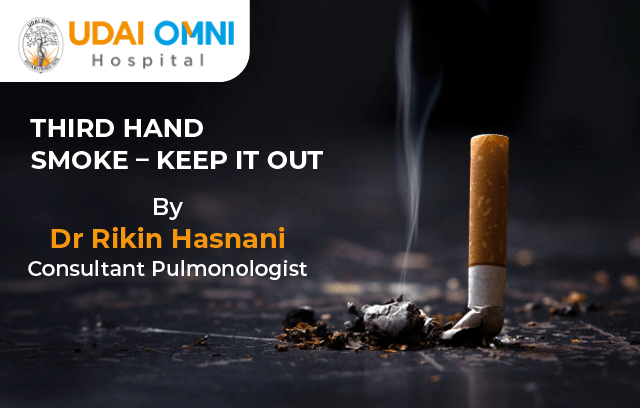THIRD HAND SMOKE – KEEP IT OUT
The common belief is that the person who smokes is the one only affected by smoking. However, that’s not true. Over time we have understood that children and non-smoking adults around a smoker might also have an adverse effect of smoking. Risks due to third-hand smoke can vary from recurrent asthma attacks to cancer.
Smokers are of 3 types depending on type of exposure
- FIRST HAND SMOKERS: Smokers himself
- SECOND HAND SMOKERS: Those who inhale a mixture of exhaled smoke and other substances left by the smoldering end of the cigarette
- THIRD HAND SMOKERS: Those exposed to toxins residues that cling to different indoor surfaces.
Third Hand Smoke
Third-hand smoke is residual nicotine, tar, and other carcinogenic (cancer-causing) toxins left on indoor surfaces by tobacco smoke.
It clings on to clothes, furniture, drapes, walls, bedding, carpets and lingers on surfaces long after smoking has stopped which accumulates on the surfaces over a period of time. Non-smokers are exposed to these chemical toxins when they inhale, swallow or touch these surfaces.
Health Hazard due to third hand smoke
It may cause illnesses such as heart disease, cancer, chronic obstructive pulmonary diseases (COPD), ear infections in a third-hand smoker is equal to that in a smoker.
Infants and children are at the highest risk of health hazards. Children have poor brain dependent and frequent “Asthama Attacks”.
Research at Lawrence Berkeley National Laboratory found that baby mouse exposed to clothes and third-hand smoke were underweight and had negative effects on red cell production.
Prevention
- The only way to protect non-smokers from Third-hand smoke is to create a smoke-free environment away from children, pets and those at risk.
- To remove residues from hard surfaces, fabrics, and upholstery must be regularly cleaned professionally.
- Simply airing rooms via air conditioners and fans do not eliminate third-hand smoke. The only way to completely protect is to quit.



